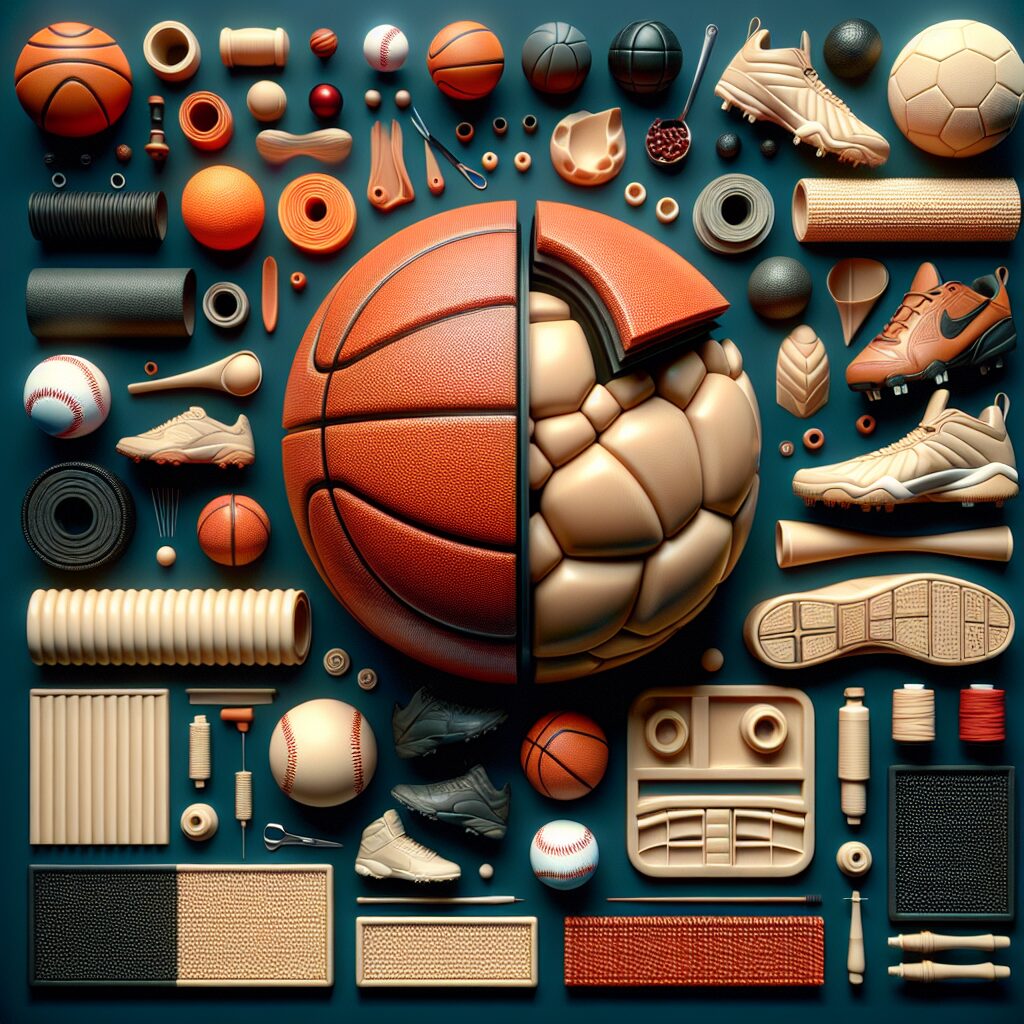Core Formation: Building the Foundation of Sports Balls
In the world of sports, the quality and performance of the equipment used can greatly impact the game. One component that often goes unnoticed, yet plays a vital role in sports like soccer, basketball, and volleyball, is the core formation of sports balls. The core refers to the center or innermost part of a ball, which is responsible for providing stability, durability, and responsiveness during play.
The construction of the core is crucial in determining the overall performance of the ball. A well-designed core ensures optimal flight, bounce, and spin, enhancing the player’s control and accuracy. For instance, in a soccer ball, a properly formed core maintains shape integrity, making it predictable when kicked or headed. Similarly, in basketball, a solid core facilitates better dribbling and shooting techniques. Understanding the impact of core formation is essential for both athletes and manufacturers alike, as it directly affects the game experience and player performance.
Moving forward, let’s explore key takeaways about core formation in sports balls. We will delve into the different materials used, such as rubber, latex, or synthetic compounds, and their unique properties that make them suitable for specific sports. Additionally, we will discuss the manufacturing processes involved, including molding, layering, and inflating, all of which contribute to achieving the desired characteristics in a ball’s core. By gaining insight into the intricacies of core formation, athletes can make informed decisions when choosing the right sports balls for their respective sports, while manufacturers can ensure they produce top-quality equipment that meets the expectations of players. Stay tuned for an in-depth exploration of core formation in sports balls.
Key Takeaways
1. Core formation is a critical step in the manufacturing process of sports balls, involving the creation of the innermost layer that gives the ball its shape and performance characteristics.
2. The core material used in sports balls varies depending on the specific sport, with popular choices including rubber, latex, cork, and synthetic materials like polyurethane and foam.
3. The core formation process typically involves molding or shaping the core material into the desired shape, followed by curing or drying to enhance its durability and stability.
4. Precise core formation plays a significant role in determining the ball’s bounce, flight, and overall performance, making it a crucial factor in ensuring fair gameplay and athlete satisfaction.
5. Advances in technology and materials continue to drive innovation in core formation, leading to the development of high-performance balls that offer improved responsiveness, accuracy, and durability in various sports.
How is Core Formation Essential for Building the Foundation of Sports Balls?
Understanding Core Formation
Core formation is a crucial process in the production of sports balls, playing a fundamental role in shaping their performance on the field. This section will delve into the intricacies of core formation, highlighting its significance and the techniques involved.
Mechanics of Core Formation
The process of core formation begins with the selection of materials that will dictate the ball’s characteristics. Common materials include rubber, synthetic fibers, and foam, each offering unique properties. The selected materials are then fused together using advanced manufacturing techniques, ensuring optimum durability and performance.
During the core formation process, precision and accuracy are paramount. Manufacturers carefully mold and shape the cores to achieve the desired weight, size, and bounce. Additionally, core formation entails incorporating reinforcing layers and adhesives to enhance the ball’s structural integrity.
The Importance of Core Formation
Core formation is the foundation upon which superior sports balls are built. It directly influences the ball’s flight trajectory, grip, and overall feel. Whether it’s a soccer ball, basketball, or tennis ball, the core is responsible for imparting the desired characteristics that enable athletes to achieve optimal performance.
By focusing on core formation, manufacturers can tailor sports balls to meet the specific requirements of different sports. For instance, soccer balls typically have a solid core to enhance durability and provide a controlled bounce, whereas tennis balls incorporate a pressurized core for maximum springiness.
Innovation in Core Formation
The field of sports ball manufacturing is constantly evolving, with new technologies and materials driving innovation in core formation. Manufacturers are employing cutting-edge techniques such as injection molding and proprietary material compositions to elevate the performance of sports balls. This constant pursuit of improvement ensures that athletes have access to superior equipment that enhances their game.
Conclusion
Ready to Take Your Game to the Next Level? Follow These Tips:
- Choose sports balls with a well-constructed core to ensure optimal performance and longevity.
- Consider the specific requirements of your sport when selecting a ball, as different cores offer varying characteristics.
- Stay informed about advancements in sports ball manufacturing to take advantage of the latest technologies.
- Regularly inspect your sports balls for signs of wear and tear, focusing on the core’s condition.
- Invest in high-quality sports balls from reputable manufacturers to maximize your playing experience.
Frequently Asked Questions
1. What is core formation in sports balls?
Core formation refers to the process of building the innermost layer, or core, of sports balls. It is the foundation upon which the rest of the ball is constructed.
2. Why is core formation important?
Core formation is crucial as it determines the performance characteristics of sports balls. It affects factors such as bounce, flight trajectory, and overall durability.
3. What materials are commonly used in core formation?
Various materials can be used in core formation depending on the type of sports ball. For example, rubber, cork, or synthetic materials like polyurethane are commonly used in the cores of different types of sports balls.
4. How is core formation done?
Core formation involves molding the core material into the desired shape and size. The material is often heated and then placed into a mold where it cools and solidifies.
5. Are there different methods of core formation?
Yes, different sports balls may require different core formation techniques. Some common methods include injection molding, compression molding, and layering of materials.
6. Can the core material affect the performance of the ball?
Absolutely. The choice of core material has a direct impact on the performance of the sports ball. Each material possesses different characteristics that influence factors such as bounce, spin, and feel.
7. How does core formation affect the durability of sports balls?
The quality of the core formation process greatly affects the durability of sports balls. A well-formed core ensures better resistance to impacts, reducing the risk of damage during play.
8. Is core formation standardized across different sports balls?
No, core formation techniques can vary depending on the specific requirements of each sport. Different sports have different rules and regulations regarding ball specifications, including the core formation process.
9. Can the core of a sports ball be replaced or repaired?
In some cases, it may be possible to replace or repair the core of a sports ball. However, this is typically done by professionals or ball manufacturers, and it is not a common occurrence for regular players.
10. How important is the core formation when selecting a sports ball?
The core formation process plays a crucial role in determining the performance and durability of a sports ball. It is an essential factor to consider when choosing a ball suitable for a specific sport or personal preference.
Final Thoughts
Core formation is an often-overlooked aspect of sports ball manufacturing, but it is undoubtedly the foundation that defines a ball’s performance. Whether it’s the powerful bounce of a basketball or the precise flight of a golf ball, the core is responsible for these characteristics. Understanding the significance of core formation helps players and enthusiasts appreciate the intricate design and engineering behind their favorite sports balls.
When considering purchasing a sports ball, paying attention to its core formation becomes essential. Different sports require specific performance attributes, and the core material and formation process directly influence these characteristics. By recognizing the importance of core formation, players can make more informed decisions and ultimately enhance their enjoyment and performance in their chosen sport.




